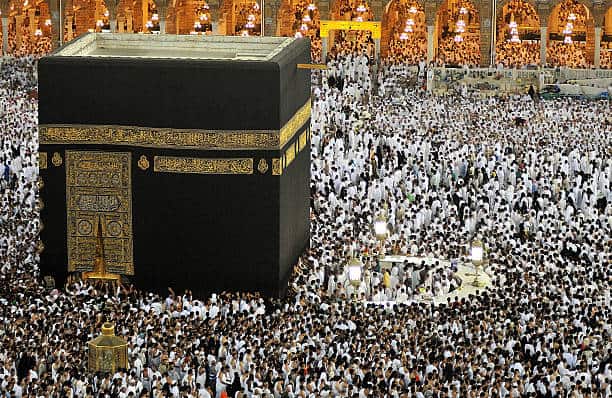
The Five Days of Hajj Explained Step by Step

Hajj is the 5th pillar of Islam which is considered the most important pillar and part of Muslims life. Hajj is obligatory for every Muslim to perform once in a lifetime if he/she is physically and financially capable. Hajj is performed in the holy month of Dhul Hajj the last Islamic month. Hajj rituals are performed from 8th Zil Hajj to 12th Zil Hajj according to the Islamic calendar in Makah the city of Saudi Arabia. Below we will discuss the five days of hajj with step by step guide so that Muslims who are going to perform Hajj can make it meaningful.

First Day of Hajj (8th Zil Hajj)
Hajj starts on the 8th Zil Hajj with pilgrims being reminded of their duties and the prohibitions of Ihram starting in Miqat. Pilgrims must wear the Ihram garments that are two unstitched clothes for men, or loose-fitting clothing for women in addition to following certain rules, such as not giving in to anger or engaging in sexual activity and confirms their intentions to make the pilgrimage. After putting Ihram and upon arrival to Makah, Pilgrims should make Tawaf which is considered an important part of the pilgrimage and refers to the seven times pilgrims circle around the Kaaba at the beginning, during and at the end of hajj. After performing Tawaf, pilgrims perform Sa’ey, memorizing the journey of Prophet Ibrahim’s (AS) wife Hazrat Hajrah to find water for her infant prophet Ismail (AS) after they were left in the desert of Makah at Allah’s command. After morning prayers, pilgrims make their way to the first location Mina that is the 8km journey from Masjid al-Haram. The pilgrims stay there for the whole day and carry out noon, afternoon, evening and night prayers. Most of the time in Mina is spent in offering prayer and remembering Allah (SWT).
Second Day of Hajj (9th Zil Hajj)
After performing dawn prayer pilgrims make their way from Mina to Arafat and devote all of their time in performing prayers, seek forgiveness of their past sins from Almighty Allah. Pilgrims seek the mercy of Allah listen to sermons from scholars near the Jabal Al-Rahmah (The Mount of Mercy). This is often known as ‘standing before the Lord’ or Wuquf which lasts from noon to sunset. After sunset Pilgrims leave Arafat for Muzdalifah. In Muzdalifah, pilgrims spend the night praying, sleeping on the ground beneath the open sky and gathering pebbles for the next day’s ritual of stoning the Devil.
Third Day of Hajj (10th Zil Hajj)
Pilgrims start the 10th day of Zil Hajj which is known as Yawm-ul Hajj al-Akbar (The big hajj day) in Muzdalifah and begin heading back to Mina before dawn. Once they reached in Mina, perform the first Rami, throwing seven pebbles at the largest of three columns known as Jamarat. Following the stoning, male pilgrims must trim their hair and women must cut the tips of their hair.
To memorize the story of Hazrat Ibrahim (AS) and Hazrat Ismail (AS) animals are often slaughtered. Traditionally pilgrims slaughtered the animals themselves, however, today pilgrims only buy vouchers which allow an animal to be slaughtered in their name. The meat is then distributed among poor people around the world. The pilgrims then revisit the Masjid al-Haram for the Tawaf al-Ifadah, before returning to Mina to spend the night over there.
Fourth Day of Hajj (11th Zil Hajj)
On the fourth day of Hajj Pilgrims stay at Mina and perform Rami by throwing stones at all three Jimar but this time throwing seven pebbles at each of the three pillars. Pilgrims have to stay at Mina for 2 or 3 days. After staying in Mina they return to Masjid al-Haram for performing farewell Tawaf.
Fifth Day of Hajj (12th Zil Hajj)
Pilgrims reach to Masjid al-Haram perform Farewell Tawaf, by circling the Kaaba anti-clockwise seven times and touching or kissing the Kaaba if they can. Farewell Tawaf makes the end of Pilgrims Hajj. At this stage, Hajj rituals are completed.
May Almighty Allah accepts the Hajj of all those who are performing this year and also call us to visit His house the Holy Kaaba soon! Ameen




